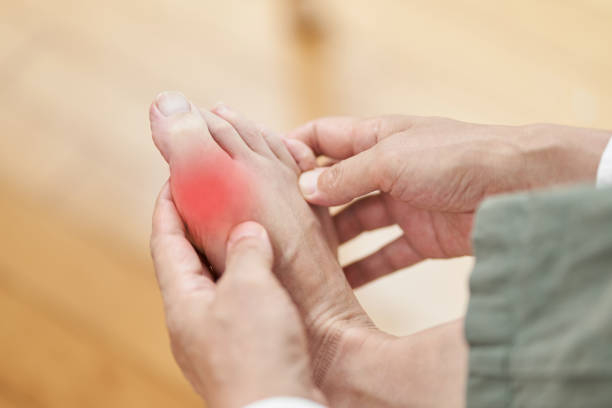Top 10 Signs and Symptoms of Psoriatic Arthritis
Psoriatic arthritis (PsA) is an inflammatory form of arthritis. It affects some people who have psoriasis, a skin condition that causes red, scaly patches to ... read more...form. PsA affects roughly 30% of people with psoriasis, and it is most common in people between the ages of 35 and 45. There is no link between the severity of psoriasis and that of PsA. PsA usually appears after the onset of psoriasis, but some people experience joint pain before they notice any skin symptoms. Here are the most common symptoms to look out for if you suspect you have PsA.
-
PsA causes joint inflammation, which can result in pain, tenderness, and stiffness. This could be felt in just one joint or several. PsA typically affects:
- knees
- fingers
- toes
- ankles
- lower back
Pain and stiffness symptoms may disappear at times, then return and worsen at other times. Remission occurs when symptoms disappear for an extended period of time. A flare-up occurs when symptoms worsen. Enthesitis can also affect the elbow, resulting in symptoms similar to tennis elbow. Elbow enthesitis symptoms include pain, tenderness, and difficulty moving your elbow. Symptoms include:
- elbow pain that gradually worsens
- pain from the outside of the elbow to the forearm and wrist
- a weak grip
- increased pain when shaking hands or squeezing an object
- pain when lifting something, using tools, or opening jars

Joint pain or stiffness 
Joint pain or stiffness -
Joints connect bones throughout the body, including the feet, ankles, knees, hips, wrists, and others. Soft tissues surround them, cushioning the bones on either side. Swelling can occur when fluid accumulates in the tissues. The following symptoms may accompany joint swelling: Joint swelling may be accompanied by:
- stiffness
- pain
- the irregular shape of digits in chronic cases
Inflammation of the joints is a common symptom of PsA. Because inflamed tissue generates heat, your joints may feel warm to the touch. Medication, physical therapy, or other methods of pain relief may be used to treat inflamed joints caused by PsA.

Joint swelling or warmth 
Joint swelling or warmth -
Nail changes, such as pitting, may be an early sign of PsA. Pitted nails have a bumpy or dented appearance. Nail pitting is more common in people with PsA and those over the age of 40. Pitted nails can cause the following symptoms:
- depressions in the fingernails or toenails
- changes in nail color (discoloration)
- changes to nail shape (deformation)
- thickening of the nails
Psoriatic changes in the nails are a predictor of joint disease and arthritis, according to research. Psoriasis can also affect the nails, giving them the appearance of a fungal infection. Nail changes, also known as nail psoriasis, affect approximately 50% of people with psoriasis and approximately 80% of people with PsA.

Pitted nails 
Pitted nails -
Nails that fall off or separate from the nail bed could also be an indication of PsA. This is known as onycholysis. Onycholysis can occur with or without pitting, but the presence of transverse grooves, or grooves running horizontally across the nail, appears to be strongly associated with PsA.
If you have onycholysis, your nail will begin to peel away from the nail bed. It can also turn yellow, greenish, purple, white, or gray depending on the cause. Onycholysis is usually not painful. It's critical to keep your nails short if you're experiencing separation, but don't clip them too short. As the new nail grows in, simply clip off the affected area. Onycholysis can be treated if the underlying cause is addressed.

Nail separation 
Nail separation -
Spondylitis is a condition caused by PsA. This causes joint swelling, particularly in the spine. The Spondylitis Association of America estimates that 20% of people with PsA will develop psoriatic spondylitis. Spondylitis is characterized by the following symptoms:
- lower back pain (lumbar and lumbosacral)
- muscle pain
- eye inflammation
- hip pain
- fatigue
In some cases, the pelvic sacroiliac (SI) joints actually fuse together. Spondylitis treatment typically focuses on pain and inflammation to help alleviate symptoms. Among the possible treatments are:
- nonsteroidal anti-inflammatory drugs (NSAIDs), such as aspirin, ibuprofen, or naproxen
- disease-modifying antirheumatic drugs (DMARDs)
- tumor necrosis alpha (TNF-alpha) blockers
- steroid injections or eye drops
- physical therapy
- when extreme, surgery for the back or hip

Lower back pain 
Lower back pain -
PsA can start in small joints like the fingers or toes and progress from there. Dactylitis, or swelling of the toe or finger joints, may accompany spondylitis. This is also known as "sausage fingers". Dactylitis is thought to affect up to 50% of PsA patients and is uncommon in other types of arthritis except for gout or pseudogout. Dactylitis caused by PsA may affect individual digits differently. Your left hand, for example, may be swollen while your right is not. Unlike other types of arthritis, PsA causes swelling of the entire finger or toe, rather than just the joint.
PsA may be indicated by pain in the feet or ankles. Enthesitis, or pain where tendons attach to bones, is common in people with PsA. This usually manifests as pain, swelling, and tenderness. The following are the most common sites for enthesitis:
- Achilles tendon
- foot
- knee
- pelvis
- elbow
- shoulder

Swollen fingers or toes 
Swollen fingers or toes -
PsA patients may experience eye issues such as inflammation and redness. Eye inflammation symptoms include:
- red eyes
- itchy eyes
- dry eyes or feeling of grit or sand in the eyes
- difficulty focusing or blurred vision
- pain or sensitivity, especially to bright light
- floaters, or small specks, lines, or other shapes in your field of vision
You may also develop uveitis, or inflammation of the uvea, the middle layer of the eye. Uveitis affects between 7% and 25% of people with PsA. Symptoms of uveitis include:
- eye pain
- eye redness
- lid swelling
- blurry vision
- floaters in your field of vision
- sensitivity to light or photophobia
- enlargement of the conjunctival vessels or hyperemia
- unexplained visual changes

Eye inflammation 
Eye inflammation -
Enthesitis can also affect the elbow, resulting in symptoms similar to tennis elbow. Elbow enthesitis symptoms include pain, tenderness, and difficulty moving your elbow. Among the symptoms are:
- elbow pain that gradually worsens
- pain from the outside of the elbow to the forearm and wrist
- a weak grip
- increased pain when shaking hands or squeezing an object
- pain when lifting something, using tools, or opening jars
Treatments can include:
- rest
- ice packs
- ultrasound therapy
- steroid injections
- shockwave therapy
- platelet-rich plasma (PRP) injections
- physical therapy and exercises

Elbow pain 
Elbow pain -
A restricted range of motion in your joints could be a sign of PsA. It may be more difficult for you to extend your arms, bend your knees, or bend forward. You might also have difficulty using your fingers effectively. This can cause issues for people who use their hands in any way, including typing and drawing.
A contracture deformity occurs when a joint becomes permanently fixed or unable to move beyond a certain point. This can lead to issues such as:
- Dupuytren’s contracture, a thickening of the tissue layer beneath the skin in the hands and wrist
- Volkmann’s contracture or lack of blood flow to the forearm causes muscle shortening
Preventive measures include a range of motion exercises prescribed by a doctor or performed with the assistance of a physical therapist.

Reduced range of motion 
Reduced range of motion -
Fatigue is a common symptom of PsA patients. You may find it difficult to get through the day without taking a nap. According to a 2007 study, up to 50% of people with skin conditions report moderate to severe fatigue, with 25% experiencing severe fatigue.
Fatigue from PsA may be caused by symptoms or complications such as:
- inflammation
- chronic pain
- anemia
- reduced physical fitness
- increased weight or obesity
- fibromyalgia
- underlying sleeping issues
- diabetes
- anxiety and depression

Fatigue 
Fatigue































